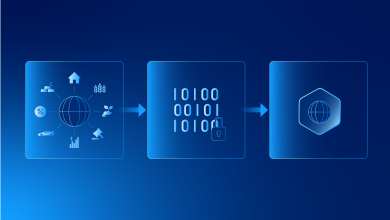Product development has always been a cycle of design, prototyping, testing, and refinement. This process, traditionally slow and expensive, often involved creating molds or machining parts, which could take weeks or even months. Today, additive manufacturing, more commonly known as 3D printing, is reshaping this entire landscape.
This technology allows you to create physical objects directly from digital files, layer by layer. For business owners, this isn’t just a novelty; it’s a powerful tool that can accelerate innovation, reduce costs, and provide a substantial competitive edge. Understanding how to integrate 3D printing into your workflow can unlock new possibilities for bringing ideas to life.
This guide will walk you through the fundamentals of 3D printing, outline its specific advantages for product development, and offer practical tips for leveraging it. By the end, you’ll have a clear picture of how this technology can refine your development process.
Basics of 3D Printing
3D printing is an additive manufacturing process. Unlike subtractive methods, where material is removed from a larger block, 3D printing builds objects from the ground up. The process begins with a digital model, typically created using computer-aided design (CAD) software.
From Digital File to Physical Object
Once you have a CAD file, it is sent to a 3D printer. The printer reads the design and constructs the object layer by layer. This layering is what makes it possible to create complex geometries and intricate details that would be difficult or impossible to produce with conventional manufacturing techniques.
Common 3D Printing Technologies
Several different 3D printing methods exist, each with its own strengths. Fused deposition modeling (FDM) is one of the most common and affordable types, where a thermoplastic filament is heated and extruded to create layers. Stereolithography (SLA) cures liquid resin into hardened plastic with a UV laser, resulting in highly detailed and smooth surfaces. Selective laser sintering (SLS) uses a laser to bind powdered material and create a solid structure.
A World of Materials
The range of materials available for 3D printing is constantly expanding. Initially limited to basic plastics like PLA and ABS, you can now print with a diverse array of materials. These include flexible resins, robust carbon fiber composites, and even metals like titanium and aluminum. This material diversity means you can create prototypes that closely mimic the properties of your final product, from its texture to its mechanical strength. For example, getting started with extruding carbon fiber filament can produce parts with exceptional stiffness and low weight.
Benefits of 3D Printing for Product Development
Integrating 3D printing into your product development cycle offers tangible advantages that can boost your bottom line and market position. These benefits extend beyond simple prototyping, influencing everything from design freedom to supply chain efficiency.
Speed Up Prototyping
One of the most powerful benefits is the ability to produce rapid prototypes. Instead of waiting weeks for a machined part or a mold, you can print a new iteration of your design overnight. This speed allows your team to test and refine ideas quickly, accelerating the entire development timeline. You can move from concept to a physical, testable model in a matter of hours, allowing for immediate feedback and adjustments.
Reduce Development Costs
Traditional prototyping methods can be costly, especially for complex or custom parts. 3D printing drastically cuts these expenses by eliminating the need for specialized tooling and reducing material waste. Since it’s an additive process, you use only the material required for the part itself. This cost-effectiveness makes it feasible to produce multiple design variations for testing, helping you find the optimal solution without a major financial investment.
Enable Complex Designs
3D printing liberates designers from the constraints of traditional manufacturing. The technology can produce intricate geometries, internal latticework, and consolidated parts that would be impossible to create with methods like CNC machining or injection molding. This design freedom opens the door for innovation, allowing for the creation of lighter, stronger, and more efficient products.
Improve Product Testing and Feedback
Having physical models early in the design process facilitates better communication and feedback. Engineers, designers, marketers, and even potential customers can hold and interact with a prototype. This tangible experience provides more valuable insights than a digital model alone. You can conduct functional tests, assess ergonomics, and validate assembly processes with a high degree of confidence before committing to expensive mass production.
Tips for Integrating the Technology
As forecasters expect the 3D printing market to grow to USD 210.5 billion by 2035, early integration could provide your business with a lasting advantage. But adopting 3D printing requires more than just purchasing a machine; it involves a strategic shift in your development workflow.
Start With a Clear Goal
Before investing, identify exactly how 3D printing will benefit your business. Are you looking to speed up prototyping, create custom tooling, or produce low-volume end-use parts? Defining your objectives will help you select the right technology, materials, and software. This clarity will also guide your team on how to best utilize the new capabilities.
Choose the Right Printer and Materials
Your specific application will determine the best printer for your needs. For simple visual models, an affordable FDM printer might be sufficient. For functional prototypes requiring high strength and precision, you might consider an SLS or SLA machine. Research different technologies and materials to find a combination that aligns with your product requirements and budget.
Train Your Team
Your team needs to understand how to design for additive manufacturing (DfAM). This approach to design optimizes parts specifically for the 3D printing process, taking advantage of its unique strengths, like creating complex internal structures. Provide training on the chosen CAD software and printer operation to empower your employees and maximize your return on investment.
Consider Outsourcing at First
If you’re not ready to invest in your own equipment, 3D printing service bureaus are an excellent alternative. These services allow you to upload your digital designs and receive physical parts in a few days. Outsourcing can be a cost-effective way to access a wide range of technologies and materials without the upfront capital expenditure and maintenance overhead. This approach lets you test the waters and prove the value of 3D printing for your business before making a larger commitment.
Redefining Your Development Process
Leveraging 3D printing is no longer a futuristic concept but a practical strategy for modern product development. By enabling rapid prototyping, reducing costs, and unlocking design freedom, this technology empowers businesses to innovate faster and more effectively. It allows you to transform ideas into tangible products with unprecedented speed and flexibility.
To get started, evaluate your current development process and identify areas where 3D printing could make a difference. Begin by exploring service bureaus to understand the possibilities, or invest in an entry-level printer to start experimenting in-house. Taking this step can refine your workflow and position your business for sustained growth.



